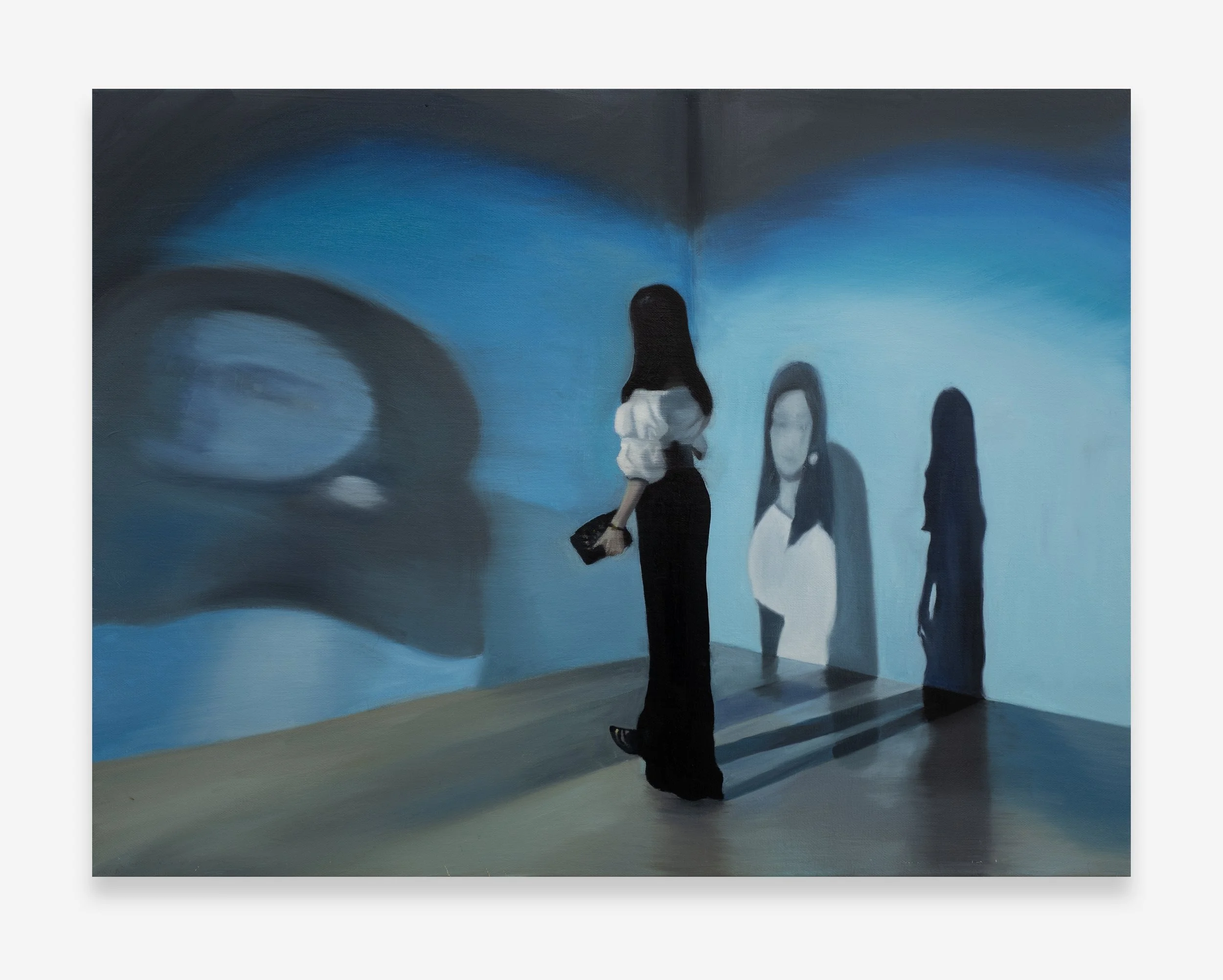Projection: light and shadow, 2021
Projection: light and shadow, 2021
Oil on linen
46 x 61 cm (18 x 24 in)
Projection: Light and Shadow (2021) explores the complex dialogue between technology and human existence through the medium of real-time video recording and projection. At the center of the composition, a figure stands on a blue-toned environment, generating multiple iterations of shadows. These shadows—one solid, one translucent, and one faint—reflect how light has evolved as both a tool and a subject in artistic expression. From the sacred illumination in religious paintings to the intimate glow of candlelight in Renaissance works, the revolutionary impact of natural light in plein air painting, and finally, to our contemporary era of digital projection. By employing real-time video projection as both subject and medium, this work provokes discussions on how technology transforms our relationship with light and shadow. The figure’s multiple shadows not only suggest physical presence but also allude to the layered nature of modern identity in the age of digital reproduction. Through this piece, we witness how the traditional artistic concern with light sources has shifted from a representational challenge to a conceptual exploration of technology’s impact on visual perception.
Q: Where does your inspiration come from? How did you conceptualize this work?
Tan Mu: My inspiration stems from reflecting on how technology shapes our perception of reality. Technology extends our sensory experiences while simultaneously reshaping memory in the digital era. I have always been fascinated by media such as video, projection, and live recording, which not only capture reality but also reconstruct it. I am also deeply interested in light. In painting, one of the most fundamental elements is the play of light and shadow, which led me to contemplate how light has evolved over time. While conceptualizing Projection: Light and Shadow, I was going through a period of personal uncertainty regarding memory and identity. It made me realize that in the digital age, human existence can become fragmented, fluid, and even redefined through technology. With this work, I sought to explore the relationship between light and shadow, using projection as a medium to reveal the fluidity of identity and the changing ways in which we perceive ourselves.
Q: How does light evolve in your work? As it shifts from natural light to electronic projection, what role does it play?
Tan Mu: In this piece, light is not just a source of illumination but a medium that shapes both space and identity. Historically, light in painting was often tied to natural sources, such as the chiaroscuro techniques of the Renaissance. In my work, however, light undergoes a transformation—from the singularity of natural shadows to the layered multiplicity of electronic projections. This shift allows me to manipulate the depth and intensity of shadows, creating varying levels of transparency and form. The figures in my work exist both as physical presences and as digital “echoes.” This layered interplay of shadows reflects contemporary ways of seeing—how we perceive ourselves through screens, cameras, and projections.
Q: In the digital age, how does your work explore identity? Does projection symbolize a new form of selfhood?
Tan Mu: Yes, in this work, projection is not only a phenomenon of light but also a metaphor for identity. In the digital age, our sense of self is increasingly defined by screens, data, and images rather than just our physical bodies. The figure in my work is surrounded by projections, her presence fragmented into multiple layers of shadow—just like our digital identities. We exist as multiple selves: the self on social media, the self under surveillance cameras, the datafied self. Each of these versions is “me,” yet none fully encapsulates who I am. The overlapping shadows in my work embody this fluidity and multiplicity of identity in contemporary life.

